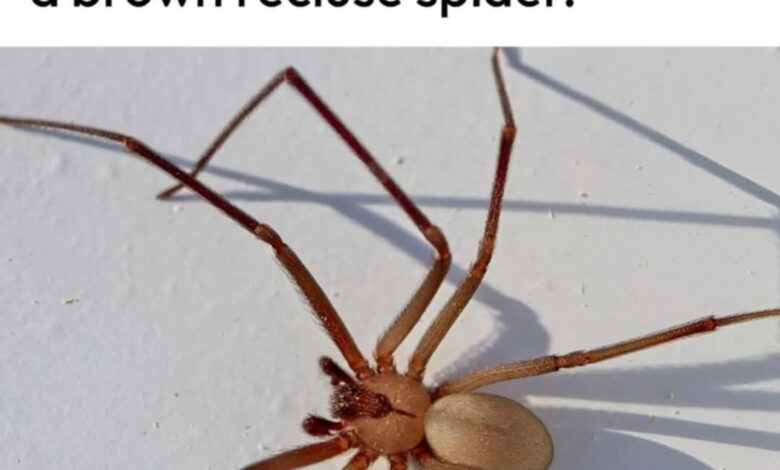Brown Recluse Spider Safety: Expert Medical Advice for Homeowners and Families

Understanding Spider Bite Risks: What Medical Professionals Want You to Know
The Brown Recluse Spider remains one of the most discussed arachnids in North American pest control and medical communities. Known for its distinctive violin-shaped marking and potential to cause concerning reactions, this spider has developed a reputation that often exceeds the actual risk it poses to most homeowners and families.
Medical experts and entomologists emphasize that while Brown Recluse spiders deserve respect and caution, the majority of encounters result in minimal symptoms or no reaction at all. Understanding the facts about these spiders can help homeowners make informed decisions about pest control and home safety.
Geographic Distribution and Habitat: Essential Home Safety Information
Where Brown Recluse Spiders Live
Brown Recluse spiders are primarily found throughout the central and southern United States, making them a concern for millions of homeowners in these regions. These arachnids have specific habitat preferences that can help homeowners identify potential risk areas around their properties.
Common Indoor Locations:
- Attics and crawl spaces with minimal foot traffic
- Storage closets and unused rooms
- Basements and utility areas
- Behind furniture and in dark corners
- Cardboard boxes and stored clothing
Outdoor Habitat Preferences:
- Woodpiles and lumber storage areas
- Garden sheds and outdoor storage buildings
- Rock piles and landscaping features
- Garage spaces and workshop areas
Behavioral Patterns and Home Safety
Pest control experts consistently note that Brown Recluse spiders are naturally shy creatures that avoid human contact whenever possible. Unlike more aggressive spider species, these arachnids are not territorial or defensive unless they feel trapped or threatened.
This behavioral characteristic is crucial for homeowners to understand, as it means that most spider-human encounters can be avoided through proper home maintenance and awareness of their preferred hiding spots.
Medical Facts About Brown Recluse Bites: What Healthcare Providers Say
Understanding Bite Reactions and Symptoms
Medical professionals emphasize that Brown Recluse spider bites often produce much milder reactions than commonly believed. According to emergency medicine specialists and toxicology experts, the majority of bites result in:
Common Mild Reactions:
- Minor redness and localized swelling
- Temporary discomfort at the bite site
- Small blister formation in some cases
- Gradual healing over several days
Rare Severe Reactions:
- Significant tissue damage (necrosis)
- Systemic symptoms affecting overall health
- Secondary bacterial infections
- Scarring requiring medical intervention
Healthcare providers note that severe reactions are uncommon and typically occur in individuals with compromised immune systems or those with specific medical conditions that affect wound healing.
Professional Medical Response and Treatment
Emergency medicine physicians recommend a measured approach to suspected Brown Recluse bites. The standard medical protocol includes:
Immediate First Aid Measures:
- Thorough cleaning of the bite area with soap and water
- Application of cold compress to reduce swelling
- Elevation of the affected area when possible
- Monitoring for changes in symptoms over 24-48 hours
When to Seek Medical Attention:
- Increasing pain or swelling after 24 hours
- Signs of infection (warmth, red streaking, pus)
- Systemic symptoms like fever or nausea
- Skin changes that worsen over time
Medical experts emphasize that most Brown Recluse bites heal naturally without requiring prescription treatments or advanced medical interventions.
Professional Pest Control and Home Safety Strategies
Evidence-Based Prevention Methods
Professional pest control specialists recommend several proven strategies for reducing Brown Recluse spider populations around homes:
Indoor Prevention Techniques:
- Regular cleaning and decluttering of storage areas
- Sealing cracks and gaps in walls and foundations
- Reducing moisture levels in basements and crawl spaces
- Proper storage of seasonal clothing and linens
Outdoor Management Strategies:
- Maintaining clean, organized outdoor storage areas
- Regular inspection and cleaning of garden sheds
- Proper stacking and covering of firewood
- Elimination of debris piles near home foundations
Home Safety Protocols for Families
Safety experts recommend establishing simple household routines that can significantly reduce the risk of unwanted spider encounters:
Daily Safety Habits:
- Shaking out clothing and shoes before wearing
- Checking bedding and towels in storage areas
- Using gloves when handling stored items
- Maintaining awareness in low-traffic home areas
Seasonal Home Maintenance:
- Regular inspection of attics and basements
- Professional pest control consultations
- Proper ventilation in storage areas
- Ongoing monitoring of potential habitat areas
Expert Insights on Spider Safety and Public Health
Balanced Perspective from Medical Professionals
Healthcare providers and public health experts emphasize the importance of maintaining perspective about Brown Recluse spiders. While these arachnids deserve respect and appropriate caution, excessive fear can lead to unnecessary anxiety and overreaction to minor incidents.
Medical research consistently shows that the vast majority of people living in Brown Recluse habitat areas never experience problematic encounters with these spiders. This statistical reality helps put the risk in proper context for homeowners and families.
Professional Recommendations for Homeowners
Pest management professionals recommend focusing on practical, evidence-based prevention strategies rather than aggressive chemical treatments or extreme measures. Simple home maintenance and awareness practices provide effective protection while maintaining a healthy living environment.
The Bottom Line: Smart Home Safety Without Panic
Understanding Brown Recluse spiders through the lens of medical facts and professional pest control expertise allows homeowners to make informed decisions about their family’s safety. These arachnids, while deserving of respect, pose manageable risks that can be effectively addressed through simple prevention strategies and proper knowledge.
The key to effective Brown Recluse safety lies in maintaining awareness without allowing fear to dominate decision-making. With accurate information, appropriate precautions, and professional guidance when needed, homeowners can create safe living environments while avoiding unnecessary anxiety about these naturally shy spiders.
Remember: knowledge and preparation are your best tools for maintaining a safe home environment. By understanding the facts about Brown Recluse spiders and implementing proven prevention strategies, you can protect your family while maintaining peace of mind in your daily life.